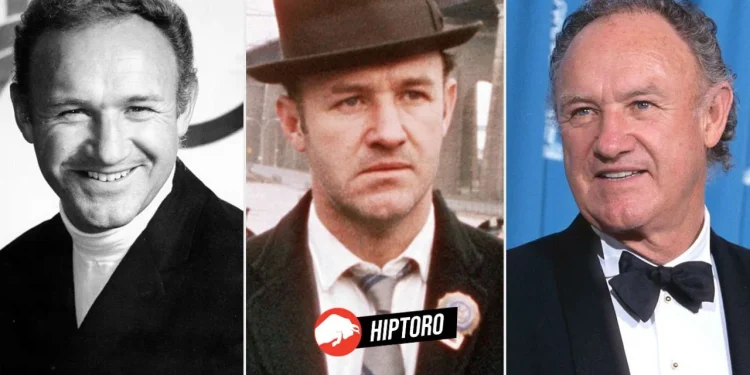Gene Hackman, a powerhouse of talent and versatility, has graced the silver screen with performances that have not only defined cinematic excellence but have also left an indelible mark on Hollywood’s landscape. In a career spanning over four decades, Gene Hackman’s roles have traversed the spectrum of human emotion and character complexity, making him one of the most respected and enduring figures in film.
This article aims to celebrate the illustrious career of Gene Hackman by diving deep into the analysis of his top 10 movies. Through an exploration of plot intricacies, character development, thematic depth, and critical acclaim, we will unveil the essence of what makes each film a noteworthy piece of cinematic history, thereby reflecting on Gene Hackman’s evolution as an actor and his monumental contribution to the world of cinema.
1. The French Connection (1971)
“The French Connection” (1971), under the direction of William Friedkin, not only redefined the crime genre but also solidified Gene Hackman’s status as a leading actor of his generation.
This film, inspired by the real-life chase of a French heroin smuggler, showcases Gene Hackman in the role of NYPD Detective Jimmy “Popeye” Doyle. This character, known for his abrasive methods and relentless pursuit of justice, is a study in complexity and dedication, a role that Gene Hackman immersed himself into with a fervor that translated into one of the most memorable performances of his career.
The narrative of “The French Connection” is propelled by its raw and gritty portrayal of New York City in the 1970s, a metropolis beleaguered by narcotics and crime. Gene Hackman’s Detective Doyle is not your typical hero; he is as flawed as the world he navigates, making him a relatable and deeply human character. The actor’s ability to portray Doyle’s obsession with capturing the elusive drug smuggler Alain Charnier (played by Fernando Rey) brings an intensity and realism to the screen that was unprecedented at the time.
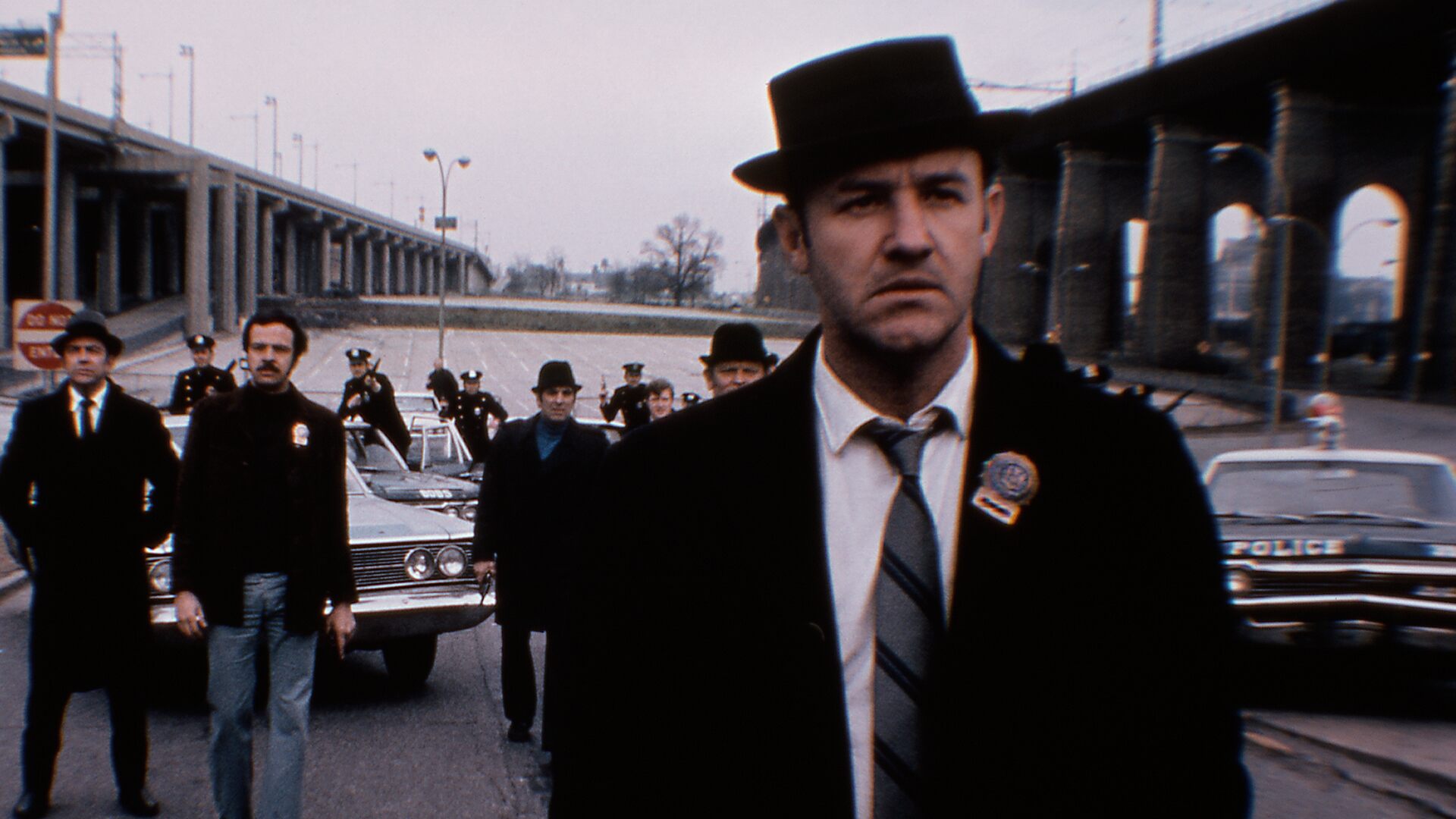
One of the film’s most iconic elements is the car chase sequence through the streets of New York City. This scene, often cited as one of the greatest in cinematic history, exemplifies the film’s innovative approach to action sequences. Friedkin’s decision to shoot these scenes with Gene Hackman performing much of the driving himself added authenticity and immediacy that viewers had never seen before. This high-octane chase not only serves as a critical plot point but also symbolizes Doyle’s relentless pursuit of justice, at any cost.
Hackman’s performance in “The French Connection” was universally acclaimed, earning him an Academy Award for Best Actor. Critics praised his ability to convey the moral ambiguity of Doyle’s character, reflecting the complexities of law enforcement and the personal toll it takes on those who shoulder its burdens. Hackman’s portrayal was a key factor in the film’s success, offering a character study that was as compelling as the film’s action sequences.
Beyond its immediate success, “The French Connection” had a lasting impact on the crime genre and Hollywood at large. It introduced a level of realism and grittiness that would influence countless films in the following decades. The movie’s success proved that audiences were ready for more complex and nuanced portrayals of crime and law enforcement, paving the way for future classics.

Furthermore, the film’s critical and commercial success underscored the importance of location in storytelling. New York City, with its gritty streets and vibrant urban life, became a character in its own right, setting a precedent for urban realism in cinema. This approach to setting not only enhanced the narrative’s authenticity but also showcased the city’s role in the broader cultural and social issues of the 1970s.
In addition to its narrative and stylistic achievements, “The French Connection” also highlighted the collaborative nature of filmmaking. From Friedkin’s innovative direction and Hackman’s groundbreaking performance to the skillful editing and the memorable score, every element of the film worked in harmony to create a cinematic masterpiece.
In reflecting on Gene Hackman’s career, “The French Connection” stands as a testament to his immense talent and versatility. Through his portrayal of Jimmy Doyle, Gene Hackman not only defined a genre but also set a new standard for character-driven storytelling in cinema. The film’s legacy, bolstered by Hackman’s unforgettable performance, continues to influence filmmakers and actors, proving that intense dedication to the craft of storytelling can result in timeless works of art.
As we delve deeper into Gene Hackman’s top movies, it’s clear that his role in “The French Connection” was a pivotal moment not only in his career but also in the evolution of the crime drama genre. Hackman’s ability to embody such a complex character paved the way for his future roles and established him as one of Hollywood’s most enduring and versatile talents.
2. Unforgiven (1992)
“Unforgiven,” directed by Clint Eastwood in 1992, is not just a Western; it is a profound exploration of redemption, morality, and the legacy of violence. In this cinematic masterpiece, Gene Hackman plays Little Bill Daggett, the sheriff of Big Whiskey, Wyoming, with a performance that is both compelling and chilling. Gene Hackman’s portrayal of Little Bill, a character who embodies the contradictions and complexities of the human spirit, contributed significantly to the film’s critical acclaim and enduring relevance.
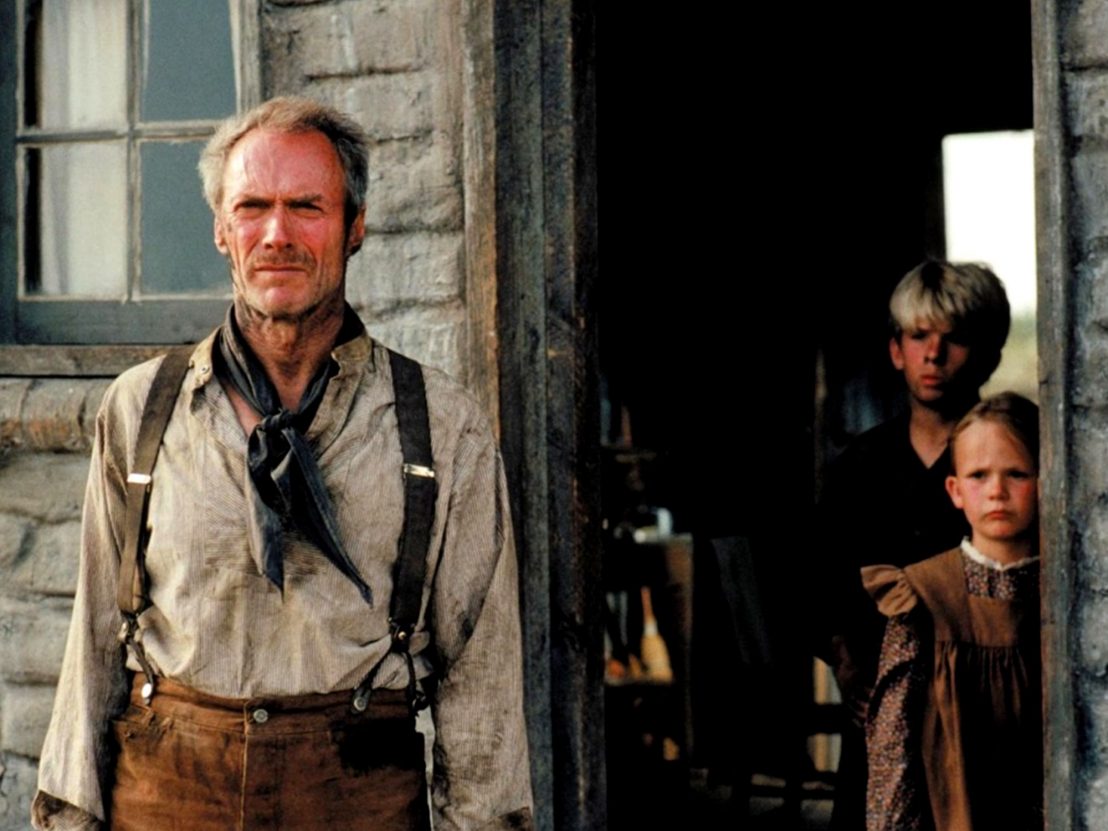
In the vast expanse of the American West, Hackman’s Little Bill stands as a figure of authority tasked with maintaining order in a land where lawlessness is common. Yet, what makes Little Bill fascinating and terrifying in equal measure is his moral code, which often leads him to actions that are cruel and unjust. Gene Hackman’s nuanced performance brings to life a character who sees himself as a custodian of peace, even as his actions contradict the very essence of justice. This dichotomy is at the heart of Hackman’s role, showcasing his exceptional ability to delve into the psyche of complex characters.
“Unforgiven” is celebrated for its deconstruction of the Western genre, challenging the glorification of violence and the myth of the heroic gunslinger. In this context, Gene Hackman’s Little Bill is the antithesis of the traditional Western hero. He is a man who has seen too much violence and, in his quest to prevent it, becomes a perpetrator himself. Hackman brilliantly portrays this transformation, capturing the inner turmoil and contradictions that plague Little Bill. His performance is a critical element in the film’s commentary on the cycle of violence and the cost of redemption.
The relationship between Little Bill and William Munny, played by Eastwood, is central to the narrative of “Unforgiven.” Gene Hackman and Eastwood deliver performances that are a study of contrasts and similarities, highlighting the blurred lines between good and evil. The dynamic between the two characters, with Hackman’s lawman facing off against Eastwood’s retired outlaw, adds depth to the film’s exploration of morality. Hackman’s ability to convey Little Bill’s complexity enhances the film’s examination of the myths of the Old West, presenting a more nuanced and realistic portrayal of heroism and villainy.
Gene Hackman’s performance in “Unforgiven” earned him an Academy Award for Best Supporting Actor, a testament to the impact of his portrayal of Little Bill Daggett. Critics and audiences alike praised Hackman for his ability to imbue his character with a sense of humanity, even as he commits acts of cruelty. This balance between sympathy and detestation for Little Bill is a testament to Hackman’s skill as an actor, demonstrating his capacity to explore the depths of human nature.
The cultural impact of “Unforgiven,” bolstered by Hackman’s performance, extends beyond its critical acclaim. The film challenged audiences to reconsider their perceptions of the Western genre and its heroes. By presenting characters like Little Bill in shades of gray, “Unforgiven” offered a more authentic and reflective portrayal of the American West. Gene Hackman’s role in this reimagining of the Western hero has contributed to a broader understanding of the complexities of justice and morality.

Beyond its contribution to the Western genre, “Unforgiven” stands as a significant work in the exploration of the human condition. Hackman’s portrayal of Little Bill Daggett is a masterclass in character development, showcasing his exceptional talent for bringing depth and nuance to his roles. His performance is integral to the film’s examination of the consequences of violence, the nature of justice, and the possibility of redemption.
In reflecting on Gene Hackman’s illustrious career, his role in “Unforgiven” highlights his versatility and depth as an actor. Through Little Bill Daggett, Hackman explores the darker facets of authority and morality, contributing to a film that challenges and transcends genre conventions. His performance in “Unforgiven” not only earned him critical acclaim but also cemented his legacy as one of the most talented and insightful actors of his generation.
3. The Conversation (1974)
“The Conversation,” directed by Francis Ford Coppola in 1974, stands as a testament to the power of psychological drama and the art of suspenseful storytelling. Gene Hackman’s portrayal of Harry Caul, a highly skilled but emotionally isolated surveillance expert, offers a deep dive into the psyche of a man whose life is consumed by the act of listening.
This film, released amidst the growing unease surrounding privacy and surveillance in the wake of the Watergate scandal, resonates with a chilling prescience. Hackman’s nuanced performance is central to the film’s impact, offering a layered exploration of privacy, guilt, obsession, and the ethical quandaries posed by technological advancement.
Harry Caul is a character of contradictions. He is a master of his craft, able to infiltrate the most private conversations, yet he is profoundly disconnected from the world around him. Hackman embodies this dichotomy with a subtlety that speaks volumes, conveying Caul’s professional pride and personal paranoia with equal conviction. His portrayal highlights the isolation that comes from a life spent in the shadows, listening in on the lives of others while remaining detached from his own emotions and relationships.
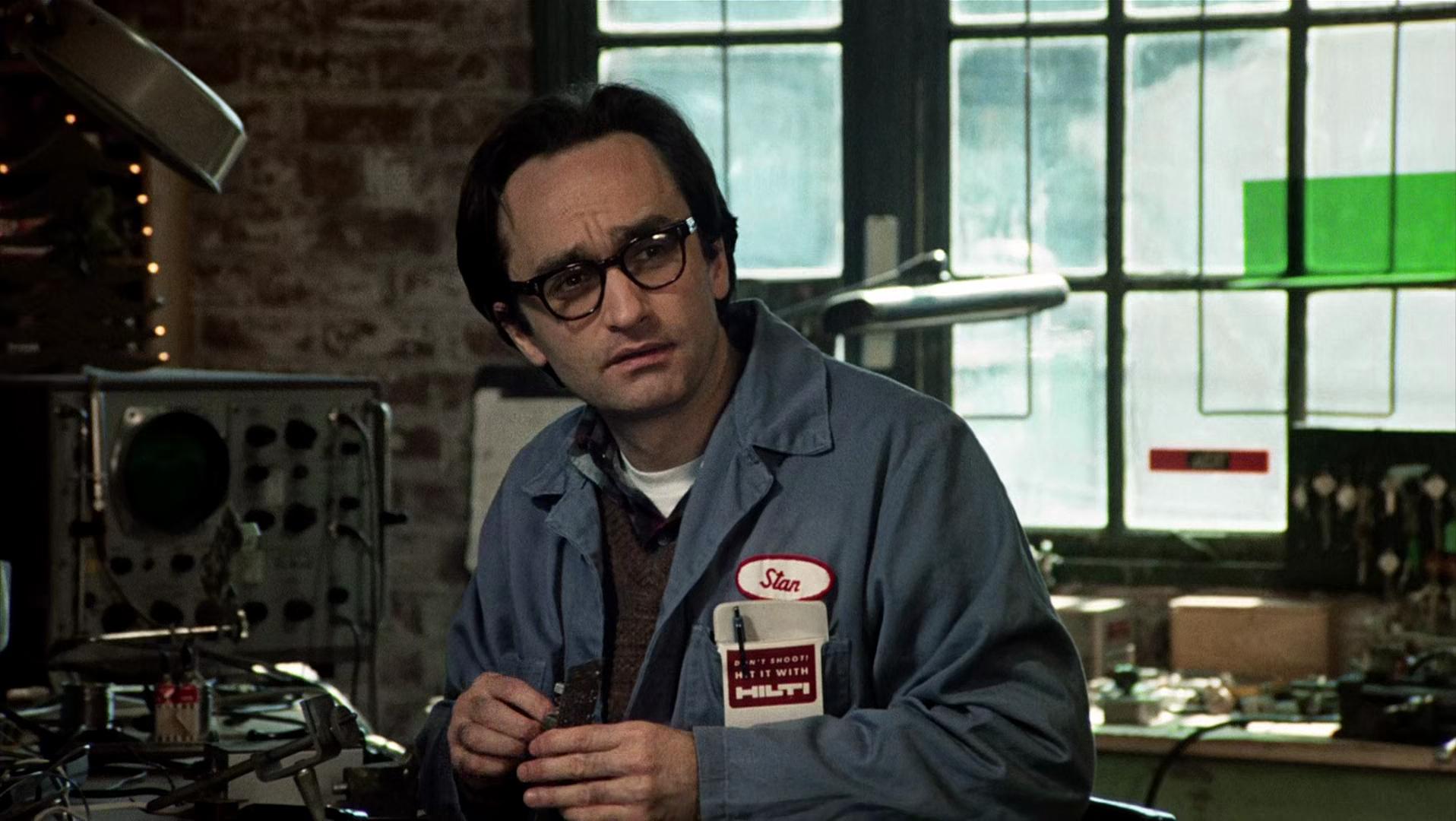
“The Conversation” is celebrated for its pioneering sound design, which serves as both a technical marvel and a narrative device. The film’s use of audio — from the fragmented conversation that Caul obsesses over to the ambient sounds that fill his world — is integral to its exploration of surveillance and eavesdropping. Hackman’s performance is inextricably linked to this sonic landscape, with his reactions and internal turmoil amplified by the film’s auditory focus. This interplay between sound and silence, listening and misunderstanding, forms the backbone of the film’s suspense and psychological depth.
One of the most compelling aspects of Hackman’s role is his portrayal of Caul’s unraveling. As the film progresses, the professional detachment that defines Caul begins to crack, revealing a man haunted by past mistakes and consumed by paranoia. Hackman navigates this descent into existential dread with a restraint that makes Caul’s journey all the more harrowing. His ability to convey the weight of guilt and the fear of being listened to, in turn, underscores the film’s commentary on the consequences of surveillance and the erosion of privacy.
“The Conversation” received critical acclaim for its thoughtful examination of themes that were ahead of its time. Hackman’s performance, in particular, was lauded for its depth and complexity. Critics recognized his ability to bring humanity to a character who could easily have been portrayed as a mere voyeur. Instead, Hackman presents Harry Caul as a deeply flawed individual, ensnared by his own devices and struggling with the moral implications of his work. This nuanced portrayal contributed significantly to the film’s enduring significance as a commentary on the dark side of technological progress.
Beyond its immediate impact, “The Conversation” has continued to resonate with audiences in the years following its release. In an era where issues of privacy, surveillance, and technological overreach are more relevant than ever, the film’s themes are strikingly prescient. Hackman’s portrayal of Harry Caul serves as a cautionary tale, highlighting the human cost of a society where privacy is compromised, and the act of listening becomes a weapon.

In examining Gene Hackman’s illustrious career, “The Conversation” stands out as a showcase of his range and subtlety as an actor. Through his portrayal of Harry Caul, Hackman delves into the complexities of solitude, responsibility, and the search for redemption. His performance not only anchors the film’s suspenseful narrative but also elevates its exploration of technological and ethical dilemmas. “The Conversation” remains a critical work in Hackman’s filmography, highlighting his exceptional talent and the timeless relevance of the questions the film poses about the nature of privacy and the human condition in the modern world.
4. Hoosiers (1986)
“Hoosiers,” directed by David Anspaugh in 1986, is more than just a sports movie; it is a deeply moving narrative of redemption, unity, and the triumph of the human spirit against the odds. Gene Hackman’s portrayal of Norman Dale, a basketball coach with a checkered past given a final shot at redemption in the small town of Hickory, Indiana, is one of his most memorable and impactful roles. Hackman’s performance brought a level of depth and nuance to the character, making “Hoosiers” an enduring classic in the sports genre and beyond.
Norman Dale is a character fraught with complexity. Once a college coach who lost his position due to his temper, Dale represents the quintessential redemption seeker, striving to find salvation in the unlikeliest places. Hackman embodies this character with a mix of toughness and vulnerability, crafting a persona that is both authoritative and deeply human. His interaction with the team, the town, and its people reflects a journey not just about basketball but about finding purpose and belonging. Hackman’s authentic portrayal resonates with anyone who has ever sought a second chance, making his performance universally relatable and profoundly inspiring.
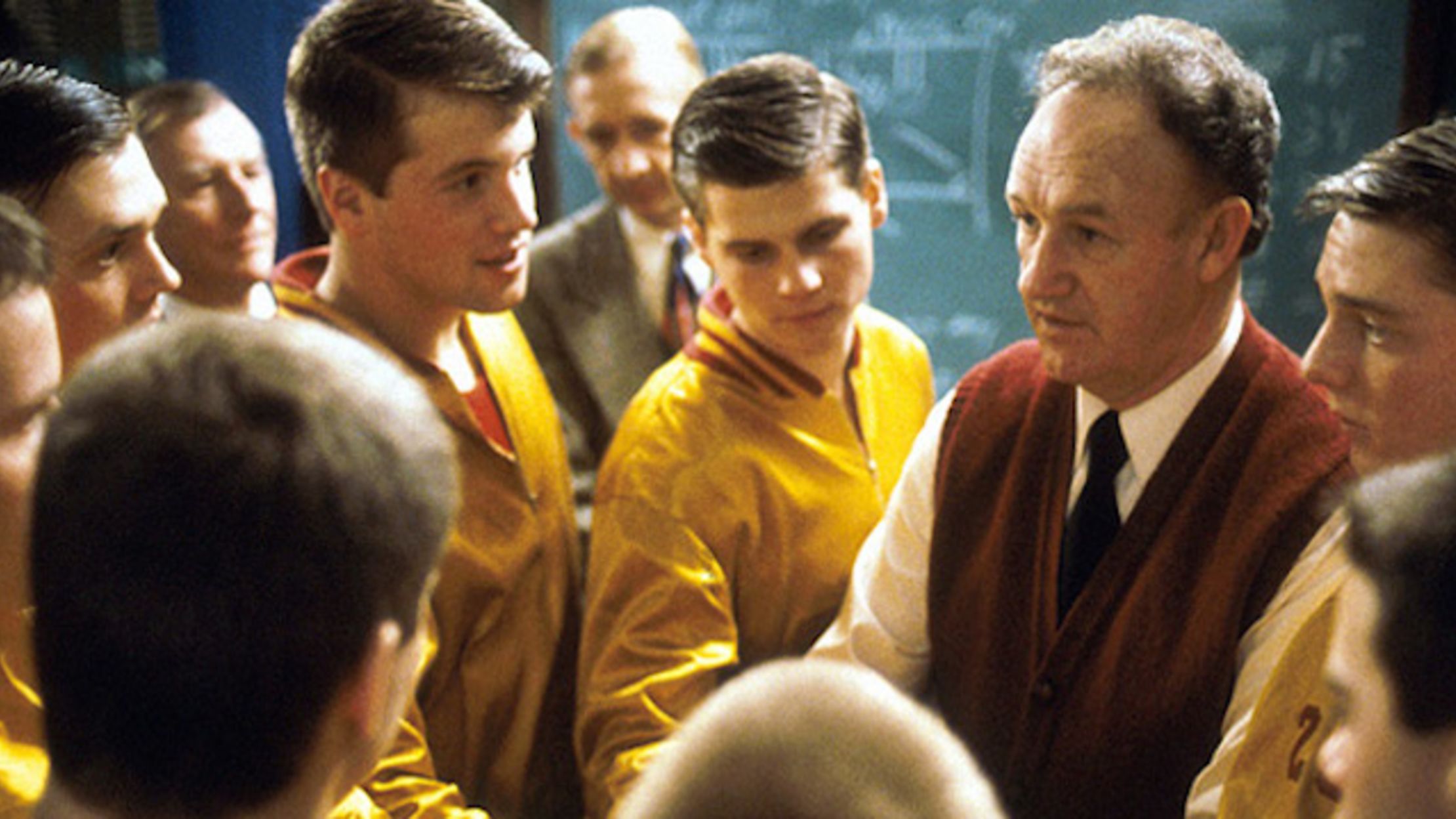
The narrative of “Hoosiers” is steeped in the themes of perseverance and resilience. Hackman’s Dale arrives in Hickory to skepticism and resistance, facing the daunting task of turning a group of underdogs into champions. The film’s depiction of their journey—marked by setbacks, personal struggles, and eventual triumphs—captures the essence of sportsmanship and the power of belief. Hackman’s portrayal is pivotal in this transformation, showcasing his ability to inspire and lead, both on and off the screen. His interaction with the players, particularly with the troubled but talented Jimmy Chitwood, highlights the impact a dedicated coach can have on his players’ lives, extending far beyond the basketball court.
One of the most compelling aspects of “Hoosiers” is its depiction of community. The small town of Hickory, with its quaint charm and close-knit population, becomes a character in its own right. Hackman’s character, through his leadership and resilience, not only transforms the team but also unites the town, reigniting their passion and pride in their identity. This portrayal of community support and collective triumph is a testament to the film’s deeper message about the significance of unity and mutual support in achieving greatness.
“Hoosiers” has left an indelible mark on the sports movie genre, setting a benchmark for storytelling that transcends the clichés of victory and loss. Hackman’s performance, in particular, has been celebrated for bringing depth and authenticity to the sports film, demonstrating that the heart of such narratives lies not in the game itself but in the human stories that unfold around it. His portrayal of Norman Dale has inspired countless individuals, emphasizing the value of determination, leadership, and the courage to pursue redemption.

Beyond its impact on cinema, “Hoosiers” has become a cultural touchstone, embodying the quintessential American underdog story. Hackman’s role in this film has been instrumental in its enduring popularity and influence, showcasing his remarkable versatility and ability to connect with audiences on a profound level. His portrayal of Norman Dale serves as a reminder of the power of second chances, the importance of community, and the enduring spirit of perseverance.
In the broader context of Gene Hackman’s career, “Hoosiers” highlights his exceptional talent for bringing complex characters to life. Through Norman Dale, Hackman explores themes of redemption, leadership, and the transformative power of belief, contributing to a film that is both uplifting and deeply human. “Hoosiers” stands as a testament to Hackman’s ability to transcend genre boundaries, offering a performance that is as inspiring as it is authentic. As we reflect on Hackman’s illustrious career, “Hoosiers” remains a key milestone, underscoring his impact not only on the sports genre but on cinematic storytelling as a whole.
5. Mississippi Burning (1988)
“Mississippi Burning” (1988), directed by Alan Parker, plunges its audience into the heart of the American South during the tumultuous 1960s, a period rife with racial tension and violence. This film, inspired by true events, centers on the investigation of the disappearance of three civil rights workers, a case that exposes the deeply ingrained racism in the region. Gene Hackman’s portrayal of FBI Agent Rupert Anderson, a native Southerner with a complex understanding of the local dynamics, is a standout performance that adds depth and gravity to the film’s exploration of civil rights-era America.
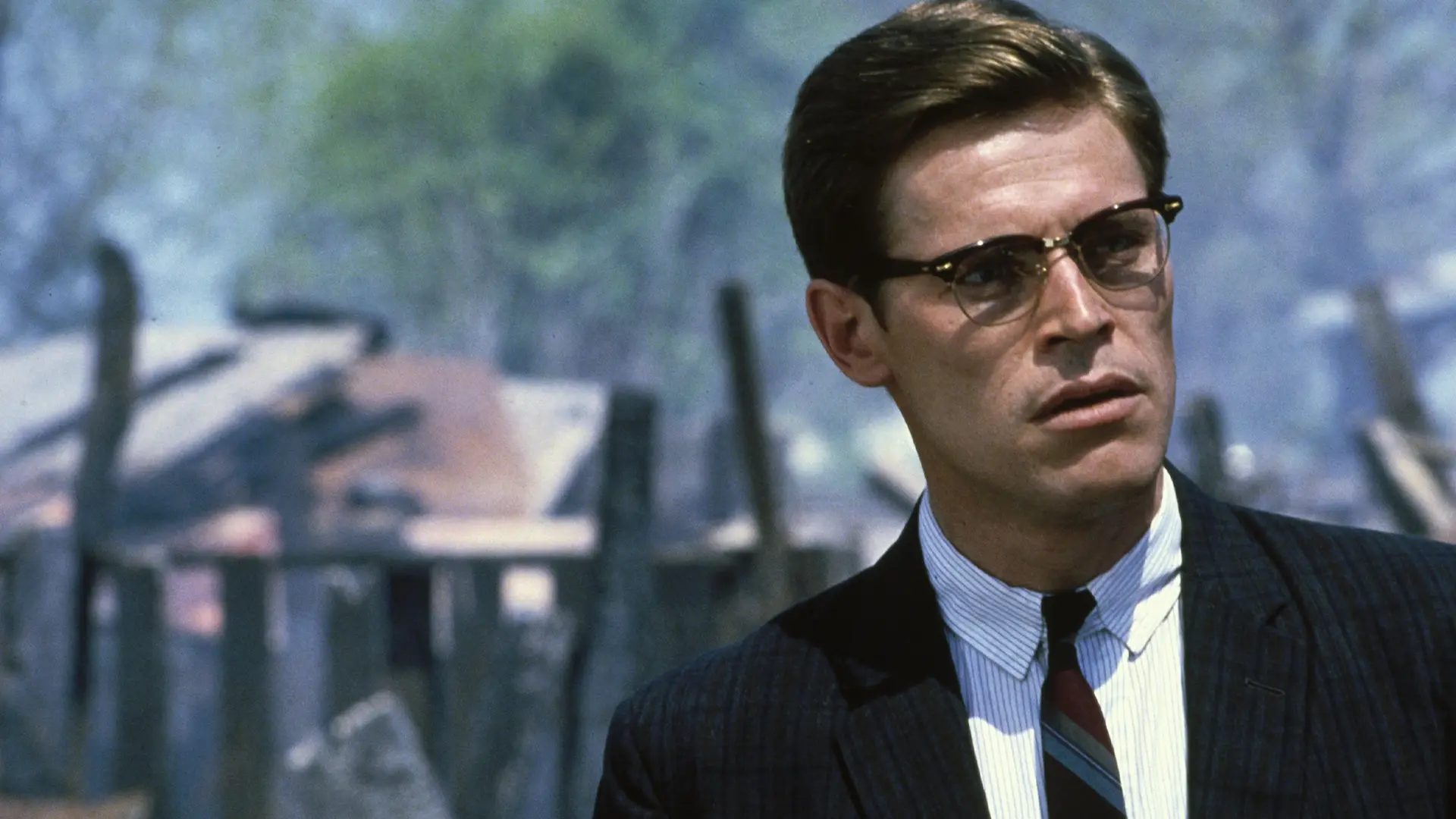
Hackman’s character, Anderson, is crafted with layers of moral ambiguity and emotional complexity. Unlike his partner, played by Willem Dafoe, Anderson approaches the investigation with a mix of pragmatism and insider knowledge, leveraging his understanding of the South’s racial divide. Hackman’s nuanced performance captures the internal conflict of a man torn between his professional duty to uphold justice and his knowledge of the community’s deeply entrenched prejudices. His portrayal offers a window into the soul of a region at war with itself, highlighting the personal costs of confronting an unjust system.
The film’s portrayal of the violent opposition faced by the civil rights movement is unflinching in its realism, depicting the brutality and fear that pervaded the South at the time. “Mississippi Burning” does not shy away from showing the horrific consequences of racism, making it a subject of controversy but also underscoring the importance of confronting America’s racist past. Hackman’s performance is critical in grounding the film’s dramatic reenactments, providing a human face to the complexities of racial injustice and the struggle for civil rights.
One of the most compelling aspects of Hackman’s role is his character’s pragmatic approach to the investigation. Anderson uses his understanding of the local culture to navigate the investigation, often employing unconventional methods to elicit information and cooperation from the townspeople. This approach highlights the moral complexities of justice work, especially in a setting where the lines between right and wrong are blurred by longstanding prejudices. Hackman’s portrayal of Anderson’s tactics and his interactions with both the local law enforcement and the African American community add a layer of realism to the film, emphasizing the challenges of enacting justice in a deeply divided society.
“Mississippi Burning” received critical acclaim for its powerful storytelling and strong performances, particularly Hackman’s. Critics praised the film for its honest portrayal of one of the darkest chapters in American history, and Hackman’s role was singled out for bringing a human dimension to the narrative. His performance was seen as a testament to his ability to inhabit complex characters, offering insights into the human condition amidst the backdrop of social and political turmoil.
The film also sparked a broader conversation about the representation of racial violence and the role of cinema in addressing historical injustices. “Mississippi Burning” serves as a reminder of the power of film to confront uncomfortable truths and stimulate dialogue about the need for change. Hackman’s portrayal of Agent Anderson, with its depth and nuance, contributes significantly to the film’s impact, making it a pivotal work in the discussion of race, justice, and reconciliation in America.

In the context of Gene Hackman’s illustrious career, “Mississippi Burning” stands out as a powerful exploration of moral ambiguity and the quest for justice. His portrayal of Rupert Anderson offers a nuanced look at the complexities of confronting systemic racism, highlighting his exceptional skill as an actor.
Through this role, Hackman not only contributed to a critically important film but also helped to illuminate the ongoing struggle for civil rights and equality in America. As we reflect on Hackman’s contributions to cinema, “Mississippi Burning” remains a potent example of his ability to tackle challenging subjects with sensitivity and insight, cementing his legacy as one of Hollywood’s most versatile and impactful actors.
6. The Royal Tenenbaums (2001)
Wes Anderson’s “The Royal Tenenbaums” (2001) is a film that masterfully blends eccentricity with emotional depth, presenting a unique narrative about a dysfunctional family of geniuses trying to navigate the complexities of life and relationships. Gene Hackman’s portrayal of Royal Tenenbaum, the estranged and manipulative patriarch, stands out as a highlight of the film, showcasing his remarkable versatility and range as an actor. Through Royal, Hackman explores themes of redemption, familial bonds, and the nuanced dynamics of a family struggling to reconcile with its past.
Royal Tenenbaum is a character filled with contradictions. He is at once charming and infuriating, a man whose attempts at reconciliation with his family are motivated by selfish desires yet somehow endear him to both the characters and the audience.
Hackman’s performance captures this complexity with a deftness that is both humorous and poignant. His timing and delivery bring to life Royal’s eccentricities and flaws, making him a character that is deeply human in his imperfections. Hackman’s ability to balance the comedic aspects of the role with its more tender moments is a testament to his skill as an actor, allowing audiences to connect with Royal despite his many faults.
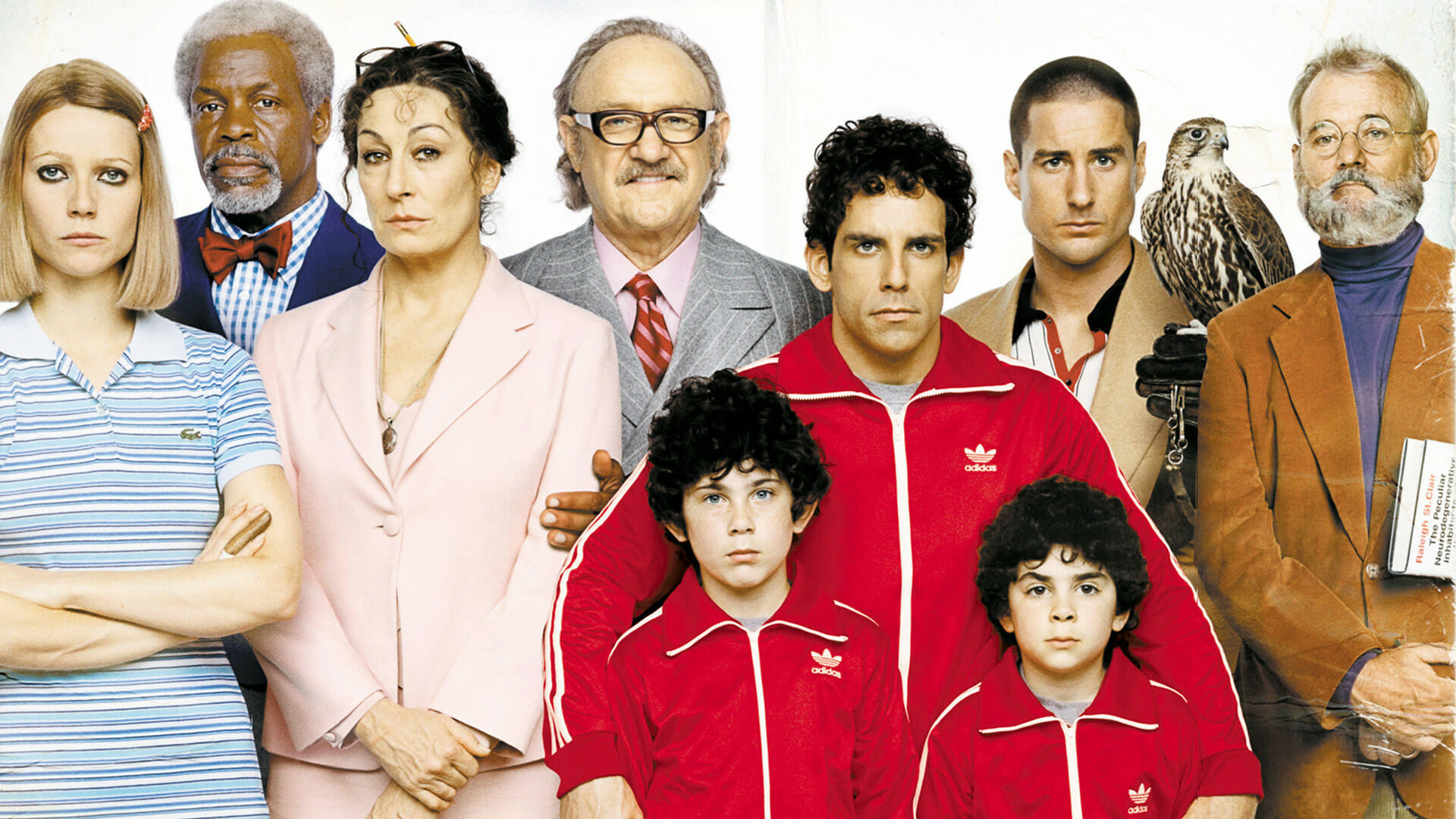
The film’s narrative structure, with its richly drawn characters and intersecting storylines, provides a canvas for Hackman to display his comedic talents while also delving into deeper emotional territory. His interactions with the other characters—each struggling with their issues and insecurities—reveal the layers of Royal’s personality and his impact on his family’s dysfunction.
Hackman’s scenes with Anjelica Huston, who plays his estranged wife Etheline, and his on-screen children, portrayed by actors such as Ben Stiller, Gwyneth Paltrow, and Luke Wilson, are particularly noteworthy. These interactions range from hilariously awkward to deeply moving, illustrating the film’s blend of absurdity and earnestness.
Critics and audiences alike praised “The Royal Tenenbaums” for its unique aesthetic, witty script, and exceptional performances, with Hackman’s portrayal of Royal Tenenbaum earning particular acclaim. His ability to evoke laughter, sympathy, and even frustration, sometimes all within a single scene, enriched the film’s exploration of the themes of failure, forgiveness, and the possibility of change. Hackman’s Royal is a character who, despite his many missteps, ultimately seeks to mend his fractured relationships, providing a narrative arc that is both redemptive and bittersweet.
The film also showcases Wes Anderson’s distinctive style, characterized by its symmetrical compositions, vibrant color palette, and meticulous attention to detail. Hackman’s performance is seamlessly integrated into this stylized world, enhancing the film’s visual and emotional impact. His portrayal of Royal Tenenbaum contributes significantly to the film’s atmosphere, balancing its stylistic flourishes with a grounded, human presence.

“The Royal Tenenbaums” added a significant layer to Hackman’s career, demonstrating his capacity to inhabit a wide range of characters and emotions. This role, with its blend of comedy and drama, highlighted Hackman’s ability to navigate complex characters with charm and depth. His performance not only contributed to the film’s critical and commercial success but also reinforced his status as one of the most talented and versatile actors of his generation.
In the broader context of Gene Hackman’s illustrious career, “The Royal Tenenbaums” stands out as a testament to his exceptional range and adaptability. Through his portrayal of Royal Tenenbaum, Hackman delivers a performance that is at once humorous and heartrending, capturing the essence of a flawed man seeking redemption and connection. This film underscores Hackman’s legacy as an actor capable of bringing depth, nuance, and humanity to a diverse array of roles, further cementing his place in the pantheon of cinematic greatness.
7. Enemy of the State (1998)
“Enemy of the State” (1998), directed by Tony Scott, is a thrilling exploration of surveillance, privacy, and the encroaching power of government in the digital age. In this high-octane thriller, Gene Hackman stars as Edward Lyle, a reclusive and paranoid former NSA communications expert with a deep understanding of surveillance technology.
Hackman’s portrayal of Lyle is a nuanced callback to his earlier role as Harry Caul in “The Conversation,” yet updated for a new era where technology has far surpassed the wiretaps and reel-to-reel tapes of the 1970s. This film cleverly bridges the gap between past and present, highlighting the ongoing and intensified concerns over privacy in a world increasingly dominated by electronic surveillance.
“Enemy of the State” thrusts Hackman’s character into a deadly game of cat and mouse after a young lawyer, played by Will Smith, becomes targeted by the NSA for possessing evidence of a political assassination. Edward Lyle, with his expertise in surveillance countermeasures, becomes an unlikely ally to Smith’s character, guiding him through a world where every move is watched and every step is tracked.
Hackman’s performance is key to the film’s tension, embodying a character who is both brilliant and deeply cynical about the powers that be. His portrayal of Lyle is that of a man burdened by knowledge, aware of the extent to which privacy has become a casualty of government overreach.
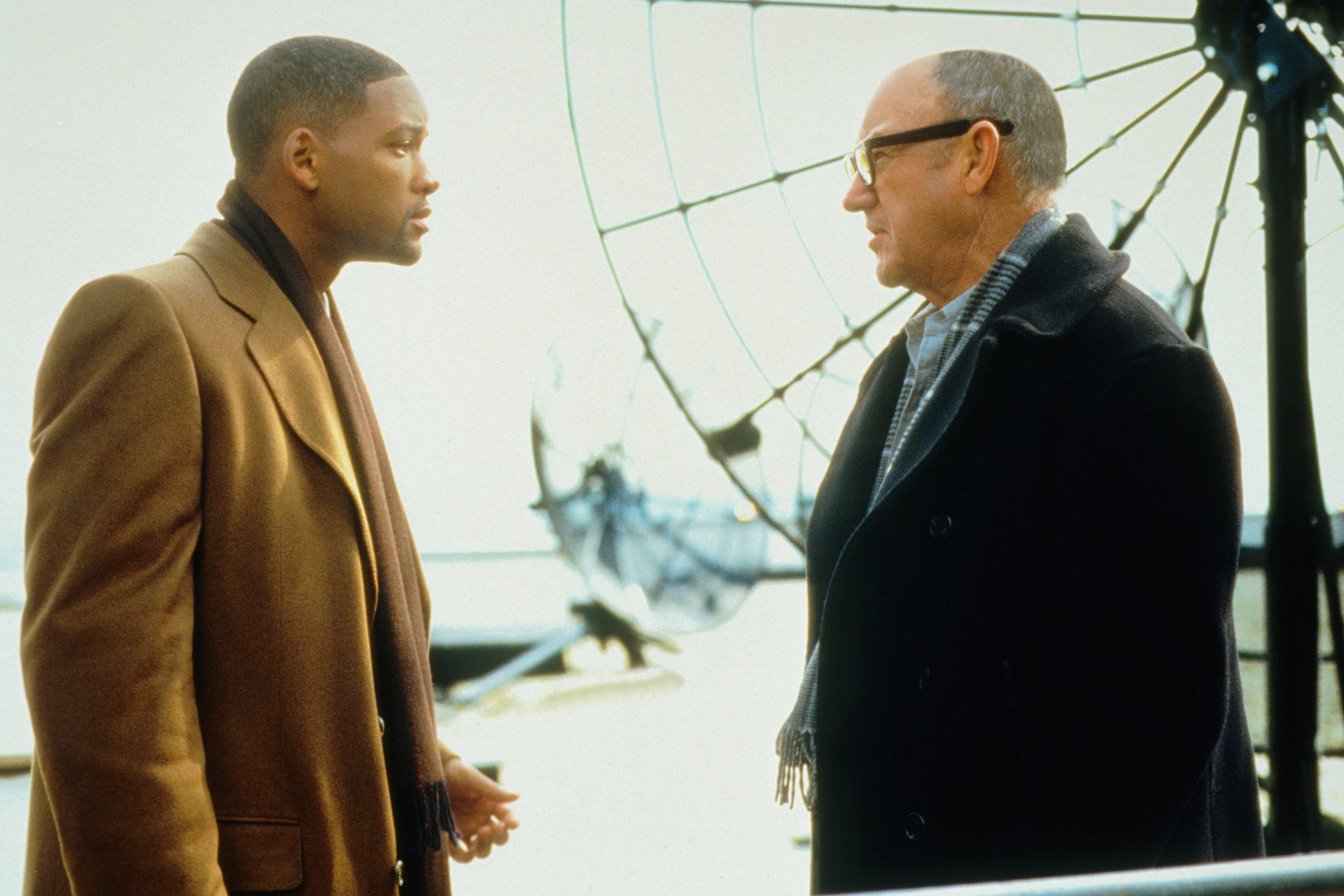
The film’s narrative is a fast-paced and gripping commentary on the dangers of unchecked government surveillance, made all the more poignant by Hackman’s grounded and compelling performance. His character serves as the moral compass of the film, illustrating the slippery slope from national security to the totalitarian surveillance state. The chemistry between Hackman and Smith adds depth to the narrative, juxtaposing Lyle’s disillusioned expertise with the lawyer’s naive righteousness.
Directed by Tony Scott, “Enemy of the State” is notable for its prescient take on issues that have only grown more relevant in the age of the internet and mass data collection. The film’s action sequences, combined with the intricate plot of surveillance and evasion, create a thrilling cinematic experience.
However, it is Hackman’s portrayal of Edward Lyle that provides the film with its emotional core and thematic weight. His performance highlights the human cost of living in a society where privacy is constantly violated, bringing a personal dimension to the broader commentary on freedom and surveillance.
Critically, “Enemy of the State” was well-received, with particular praise for its fast-paced direction, engaging story, and the performances of its lead actors. Hackman’s role was singled out for adding gravitas and complexity to the film, bridging the thematic concerns of “The Conversation” with the modern anxieties of the digital age. His character’s knowledge and paranoia about surveillance technologies spoke to a growing unease in the public consciousness about personal privacy and government intrusion.

Beyond its entertainment value, “Enemy of the State” has contributed to ongoing discussions about surveillance, personal freedom, and the balance between security and privacy. Hackman’s portrayal of Edward Lyle, with its echoes of Harry Caul, serves as a powerful reminder of the enduring relevance of these themes. In the years since the film’s release, as debates about privacy and surveillance have intensified, “Enemy of the State” and Hackman’s role in it have remained poignant reflections of the times.
In the context of Gene Hackman’s career, “Enemy of the State” showcases his ability to adapt and thrive in roles that reflect the changing societal concerns. His performance in the film is a testament to his enduring talent and relevance as an actor, capable of bridging generations and genres with his nuanced portrayals of complex characters. “Enemy of the State” not only highlights Hackman’s versatility but also cements his legacy as an actor deeply attuned to the nuances of the human condition in the face of technological and ethical challenges.
8. Crimson Tide (1995)
“Crimson Tide” (1995), directed by Tony Scott, stands out as a riveting exploration of military ethics, authority, and the harrowing brinkmanship of nuclear conflict. Set aboard the USS Alabama, a nuclear submarine, the film stars Gene Hackman as Captain Frank Ramsey and Denzel Washington as Lieutenant Commander Ron Hunter, two officers whose clashing ideologies lead to a tense standoff with global stakes. Hackman’s portrayal of Captain Ramsey is a tour de force, showcasing the actor’s ability to navigate the complexities of leadership, authority, and the heavy burden of command.
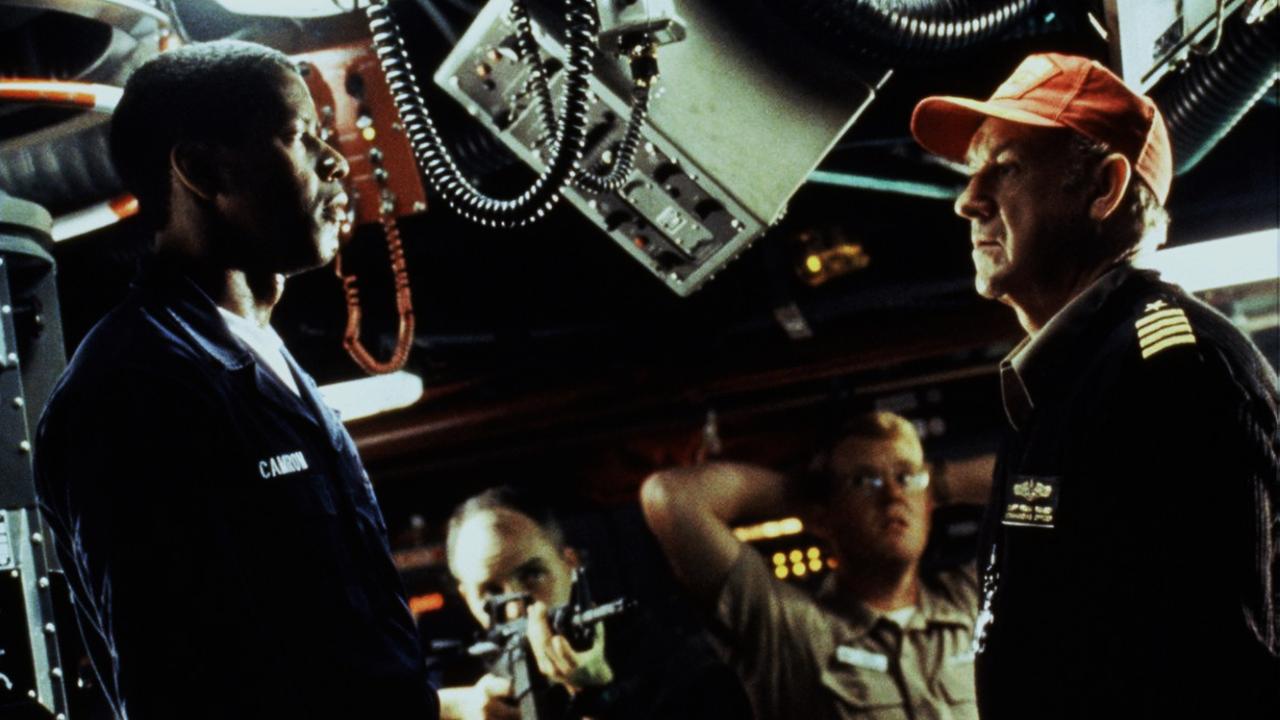
Captain Frank Ramsey is a character defined by his unwavering conviction and seasoned experience. Hackman embodies Ramsey with a formidable presence, bringing to life a leader who is both respected and feared. His portrayal captures the essence of a military man who has dedicated his life to his country, prepared to make the ultimate sacrifice if necessary. However, Ramsey’s hardline stance and belief in following orders without question set the stage for the film’s central conflict when new orders arrive and the threat of nuclear war looms large.
The dynamic between Ramsey and Hunter, played masterfully by Washington, is at the heart of “Crimson Tide.” Their ideological clash over the interpretation of orders and the ethical considerations of launching nuclear weapons serves as a powerful narrative engine.
Hackman’s interactions with Washington crackle with intensity, each exchange layered with the weight of their disagreement and the underlying respect they hold for each other. This relationship is emblematic of the film’s broader themes of authority and morality, with Hackman’s Ramsey personifying the traditional, by-the-book approach to military command.
“Crimson Tide” excels in its depiction of the claustrophobic and high-stakes environment of a nuclear submarine. The tight quarters and constant hum of the vessel serve as a pressure cooker for the film’s escalating tension. Hackman’s performance is pivotal in conveying the atmosphere of urgency and the palpable sense of danger that permeates the submarine.
His portrayal of Ramsey’s unwavering determination and his fierce commitment to duty heighten the film’s suspense, making the audience acutely aware of the razor-thin margin between peace and global catastrophe.
The moral dilemmas presented in “Crimson Tide” are complex and thought-provoking, challenging both the characters and the audience to consider the implications of their convictions. Hackman’s Ramsey represents a worldview where hierarchy and obedience are paramount, a perspective that is both challenged and validated by the unfolding events. The film does not offer easy answers but instead uses Hackman’s and Washington’s characters to explore the nuances of leadership and the ethical considerations inherent in wielding immense power.
Critically acclaimed for its intense narrative and compelling performances, “Crimson Tide” was recognized for bringing depth and sophistication to the action genre. Hackman’s portrayal of Captain Frank Ramsey was lauded for adding a profound sense of realism and gravitas to the film, embodying the complexities of command and the burdens of leadership. His performance is a testament to his skill as an actor, capable of delivering nuanced characters who resonate with audiences long after the credits roll.

In the broader scope of Gene Hackman’s illustrious career, “Crimson Tide” highlights his exceptional ability to portray multifaceted characters who grapple with moral and ethical dilemmas. Through Captain Frank Ramsey, Hackman explores the themes of authority, responsibility, and the harrowing prospect of nuclear war, offering insights into the human condition under extreme pressure.
“Crimson Tide” not only reinforces Hackman’s reputation as one of cinema’s most versatile and compelling actors but also underscores the enduring relevance of its themes in the contemporary world.
9. The Poseidon Adventure (1972)
“The Poseidon Adventure” (1972), directed by Ronald Neame and Irwin Allen, stands as a seminal work in the disaster film genre, captivating audiences with its thrilling narrative and emotional depth. Gene Hackman’s portrayal of Reverend Frank Scott, a determined and charismatic leader, is pivotal to the film’s success, embodying the themes of courage, faith, and human resilience in the face of catastrophic events. Through his role, Hackman delivers a performance that not only drives the film forward but also provides a profound commentary on leadership and survival.
Set aboard the SS Poseidon, a luxury ocean liner hit by a massive tidal wave on New Year’s Eve; the film follows a group of survivors as they navigate the overturned ship in a desperate bid for safety. Hackman’s Reverend Scott becomes the de facto leader of this diverse group, guiding them through the bowels of the capsized vessel.
His character is both complex and compelling, a man of faith who is simultaneously questioning and asserting his beliefs in the dire circumstances they face. Hackman brings a dynamic energy to the role, capturing the reverend’s unwavering determination and his ability to inspire hope in others.
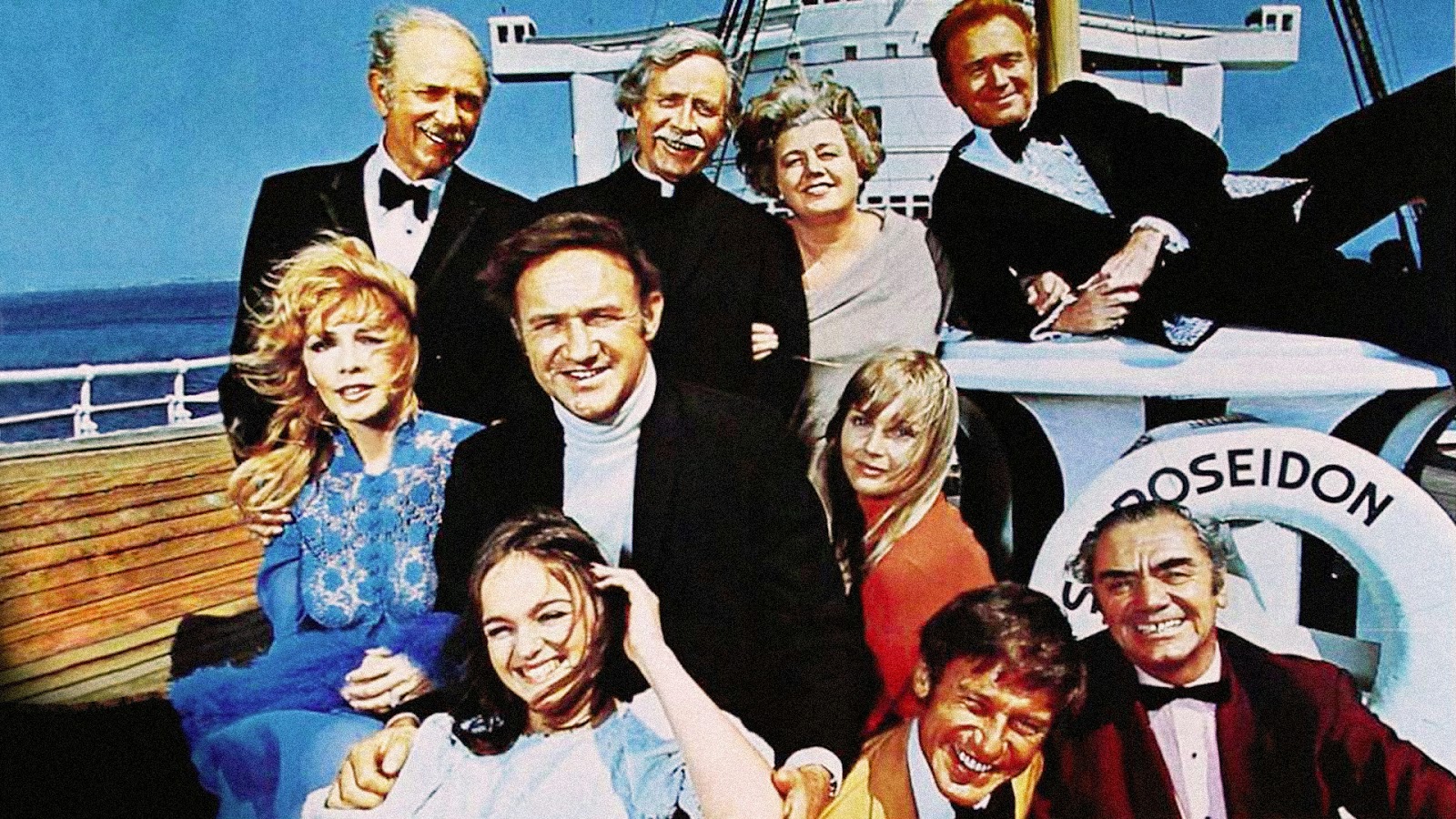
The narrative of “The Poseidon Adventure” is as much about the internal journey of its characters as it is about their physical survival. Hackman’s portrayal of Scott highlights this duality, offering viewers a character whose leadership is not just about finding a way out but also about confronting personal demons and forging connections amidst chaos.
His interactions with the ensemble cast, including characters played by Ernest Borgnine, Red Buttons, and Shelley Winters, showcase a range of human emotions, from conflict and doubt to compassion and solidarity. Hackman’s ability to convey depth and nuance in his character’s relationships adds a layer of complexity to the film, elevating it beyond the typical disaster movie fare.
Critically, “The Poseidon Adventure” was hailed for its groundbreaking special effects and set design, which created a palpably claustrophobic and hazardous environment for the characters’ journey. However, it was Hackman’s performance that anchored the film’s human element, making the perilous adventure a compelling tale of human endurance. His portrayal of Reverend Scott provided a moral center to the story, challenging both his fellow survivors and the audience to consider what it means to lead and to sacrifice for others.
The film’s success at the box office and its enduring popularity can be attributed in part to its exploration of themes that resonate on a universal level. Through Hackman’s character, “The Poseidon Adventure” delves into questions of faith, leadership, and the human capacity to overcome adversity. His performance resonates with audiences because it reflects both the vulnerability and the strength that exist within all of us when faced with insurmountable odds.

“The Poseidon Adventure” also set a precedent for the disaster film genre, blending spectacular visual storytelling with strong character-driven narratives. Hackman’s role in this film demonstrated that action-packed blockbusters could also offer meaningful insights into the human condition, a balance that has influenced countless films in the genre since.
In reflecting on Gene Hackman’s illustrious career, his role in “The Poseidon Adventure” stands out as a testament to his versatility as an actor and his ability to captivate audiences with his portrayal of complex, layered characters. Reverend Frank Scott remains one of Hackman’s most memorable roles, showcasing his talent for bringing depth and humanity to a high-stakes drama.
As “The Poseidon Adventure” continues to be celebrated by fans and critics alike, Hackman’s performance is a key element of its legacy, highlighting the enduring power of storytelling that explores the depths of human resilience and the spirit of survival.
10. Bonnie and Clyde (1967)
“Bonnie and Clyde” (1967), directed by Arthur Penn, remains one of the most iconic films in American cinema, revolutionizing the way stories were told on the big screen. Gene Hackman’s portrayal of Buck Barrow, the brother of the infamous Clyde Barrow, played by Warren Beatty, contributed significantly to the film’s depth and complexity.
Through his performance, Hackman provided a nuanced view of the Barrow gang, highlighting the human aspects of their lives amidst their criminal endeavors. His role was instrumental in fleshing out the family dynamics and loyalties that were pivotal to the gang’s infamous crime spree during the Great Depression.
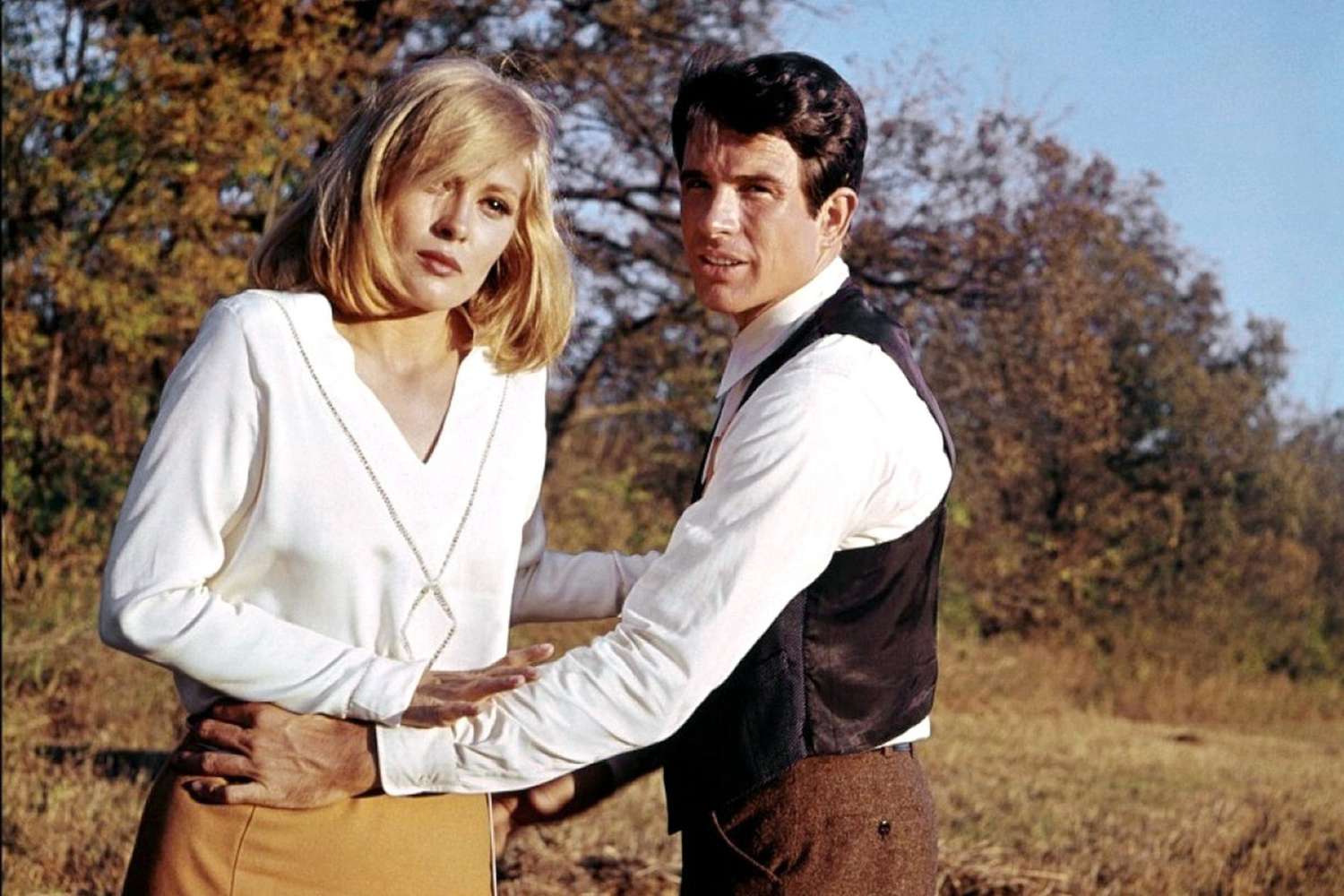
“Buck Barrow” was not merely a supporting role but a critical component of the narrative that offered insight into the personal lives of the gang members. Hackman’s portrayal brought a sense of realism and empathy to a character that could easily have been overshadowed by the film’s titular characters, Bonnie Parker (Faye Dunaway) and Clyde Barrow. Hackman’s performance showcased his ability to convey the complexities of brotherhood, loyalty, and the longing for a different life. His interactions with the other characters added layers to the story, providing a glimpse into the motivations and vulnerabilities of the people behind the headlines.
The film’s groundbreaking depiction of violence and its sympathetic portrayal of its criminal protagonists were controversial at the time but have since been hailed as pioneering. “Bonnie and Clyde” challenged the conventions of the Hollywood code, blending style, humor, and tragedy in an unprecedented manner. Hackman’s role in this cinematic landmark was crucial in humanizing the gang members, offering audiences a portrayal that went beyond the sensationalized accounts of their exploits to explore their desires, fears, and relationships.
“Bonnie and Clyde” marked an important moment in cinematic history, influencing countless films in its wake. The movie’s bold approach to storytelling, its stylistic innovations, and its unflinching depiction of violence opened new avenues for filmmakers, signaling a shift towards more open and realistic portrayals on screen. Gene Hackman’s performance in the film is emblematic of this shift, reflecting a greater focus on character development and psychological depth that would come to define modern cinema.
In the context of Gene Hackman’s career, “Bonnie and Clyde” stands out as a defining role that showcased his range as an actor and his ability to imbue his characters with depth and humanity. His portrayal of Buck Barrow contributed to the film’s success and its enduring legacy as a classic of American cinema. Hackman’s performance in “Bonnie and Clyde” not only earned him critical acclaim but also established him as a formidable talent in Hollywood, paving the way for his future roles in a wide array of groundbreaking films.

The film’s influence extends beyond its cinematic achievements, contributing to a broader cultural discourse on crime, media, and celebrity. “Bonnie and Clyde” resonated with audiences of the time and continues to captivate viewers today, reflecting the enduring fascination with outlaws and the complexities of their lives. Hackman’s role in the film is a testament to the power of storytelling to elicit empathy and understanding for even the most flawed characters.
As we reflect on “Bonnie and Clyde” and its place in cinematic history, Gene Hackman’s contribution to the film remains a key factor in its impact and longevity. His portrayal of Buck Barrow added a crucial dimension to the narrative, enriching the film’s exploration of the human condition amidst chaos and crime. Through his performance, Hackman helped to create a film that was not only a milestone in cinema but also a profound study of love, loss, and the search for identity in the American landscape.


